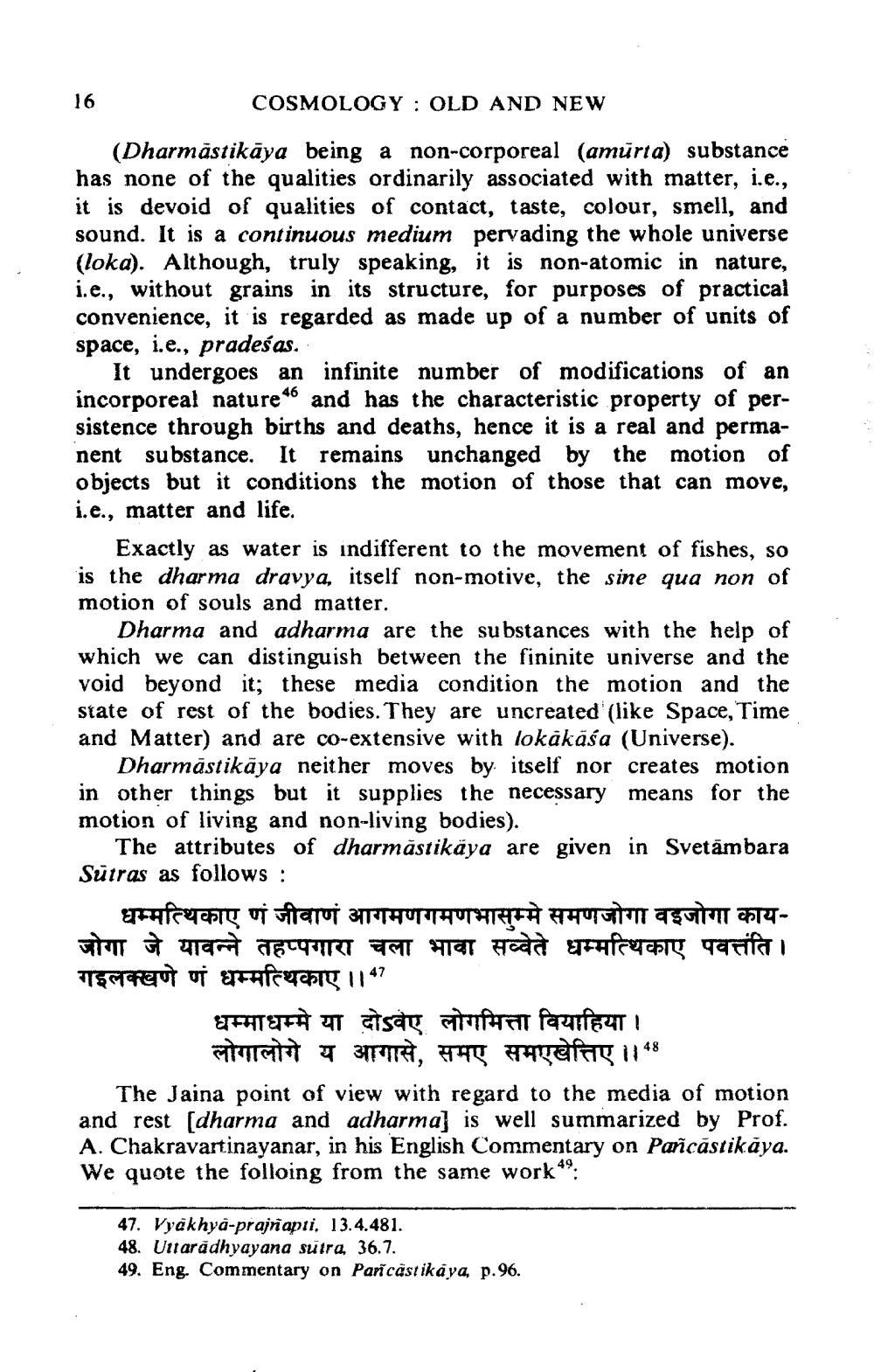________________
16
COSMOLOGY OLD AND NEW
(Dharmastikāya being a non-corporeal (amurta) substance has none of the qualities ordinarily associated with matter, i.e., it is devoid of qualities of contact, taste, colour, smell, and sound. It is a continuous medium pervading the whole universe (loka). Although, truly speaking, it is non-atomic in nature, i.e., without grains in its structure, for purposes of practical convenience, it is regarded as made up of a number of units of space, i.e., pradesas.
It undergoes an infinite number of modifications of an incorporeal nature" and has the characteristic property of persistence through births and deaths, hence it is a real and permanent substance. It remains unchanged by the motion of objects but it conditions the motion of those that can move, i.e., matter and life.
Exactly as water is indifferent to the movement of fishes, so is the dharma dravya, itself non-motive, the sine qua non of motion of souls and matter.
Dharma and adharma are the substances with the help of which we can distinguish between the fininite universe and the void beyond it; these media condition the motion and the state of rest of the bodies. They are uncreated (like Space, Time and Matter) and are co-extensive with lokākāśa (Universe).
Dharmastikaya neither moves by itself nor creates motion in other things but it supplies the necessary means for the motion of living and non-living bodies).
The attributes of dharmastikäya are given in Svetämbara Sutras as follows :
धम्मत्थिकाए णं जीवाणं आगमणगमणभासुम्मे समणजोगा वइजोगा कायजोगा जे यावन्ने तहप्पगारा चला भावा सव्वेते धम्मत्थिकाए पवत्तंति । गइलक्खणे णं धम्मत्थिकाए ।। 47
धमाधम्मे या दोsवेए लोगमित्ता वियाहिया । लोगालोगे य आगासे, समए समएखेत्तिए । 48
The Jaina point of view with regard to the media of motion and rest [dharma and adharma] is well summarized by Prof. A. Chakravartinayanar, in his English Commentary on Pañcāstikāya. We quote the folloing from the same work 49:
47. Vyakhya-prajnapti, 13.4.481.
48. Uttaradhyayana sutra, 36.7.
49. Eng. Commentary on Pancästikaya, p.96.




